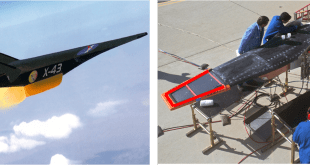In a groundbreaking achievement for India’s defense capabilities, the Indian Navy has officially certified **SEBEX-2**, a new high-performance explosive that is now recognized as **the most potent non-nuclear explosive in the world**. This development marks a significant leap in India’s indigenous military technology, reinforcing its position as a key player in advanced defense systems.
Understanding Explosive Materials: TNT, HMX and Beyond
Before delving into SEBEX-2’s capabilities, it’s important to understand conventional explosives that have formed the backbone of military and industrial applications for decades. **Trinitrotoluene (TNT)** has been the standard benchmark for explosive power since its discovery in 1863. With moderate sensitivity and stable properties, TNT became the universal reference for measuring explosive strength, rated at 1.0 on the Relative Effectiveness (RE) scale.
A significant advancement came with **HMX (High Melting Explosive)**, developed during World War II. With an RE factor of 1.7, HMX offered 70% more power than TNT while maintaining good stability. This cyclotetramethylene-tetranitramine compound became crucial in modern munitions, particularly in shaped charges and rocket propellants.
These conventional explosives, while effective, had limitations in terms of energy density and blast intensity – constraints that India’s new SEBEX-2 has dramatically overcome through innovative formulation and advanced chemical engineering.
What is SEBEX-2?
SEBEX-2 (Super Explosive Blend – 2) represents a quantum leap in explosive technology. Developed through years of research by India’s defense scientists, this advanced formulation has been rigorously tested and certified by the Indian Navy for its unmatched destructive capability.
The explosive is 2.01 times more lethal than standard TNT, making it one of the most powerful non-nuclear explosives ever created. With a significantly higher blast yield compared to other global counterparts, SEBEX-2 is designed for use in **missiles, torpedoes, and other precision-guided munitions**, enhancing India’s **conventional strike capabilities** without relying on nuclear warheads.
Why is This a Game-Changer?
This development **strengthens India’s defense arsenal** by providing a massive tactical advantage in conventional warfare. The ability to deliver more powerful strikes without resorting to nuclear options ensures greater strategic flexibility.
Additionally, SEBEX-2 reduces India’s dependence on foreign imports, aligning with the “Atmanirbhar Bharat” (Self-Reliant India) initiative. By developing such cutting-edge technology domestically, India reinforces its defense autonomy and reduces reliance on external suppliers.
The certification by the Indian Navy means SEBEX-2 can now be integrated into **naval missiles, underwater weapons, and other strategic systems**, significantly boosting maritime security. On the global stage, this breakthrough places India among an elite group of nations with advanced explosive technology, potentially opening doors for defense exports to friendly countries.
Global Landscape of Advanced Explosives: How SEBEX-2 Compares
While India’s SEBEX-2 represents a significant leap in explosive technology, several other nations have developed their own high-performance non-nuclear explosives for military applications. These advanced formulations push the boundaries of conventional explosive power while maintaining safety and stability.
United States: PBX-9501 and IMX-104
The U.S. military has pioneered several advanced explosive compounds, including PBX-9501, a plastic-bonded explosive containing HMX. With an RE factor of about 1.7, it’s used in nuclear warheads and precision munitions. More recently, IMX-104 has been developed as an “insensitive munition” explosive that combines high power with remarkable stability, reducing accidental detonation risks.
Russia: OKFOL and Composition A-IX-2
Russian explosive technology includes OKFOL, a high-density explosive with power comparable to HMX but with improved thermal stability. Their Composition A-IX-2, used in artillery shells and aerial bombs, offers about 1.7 times TNT’s effectiveness while maintaining reliable performance in extreme conditions.
China: JH-2 and HATO
China has developed JH-2, an HMX-based explosive with additives to enhance performance. More notably, they’ve researched HATO (Hydroxylammonium Triazolate), an emerging explosive compound showing potential to surpass traditional HMX formulations in both power and stability.
Europe: Hexal P30 and N15
European nations have collaborated on advanced explosives like Hexal P30 (Germany) and N15 (France). These RDX/HMX-based formulations offer enhanced blast characteristics while meeting strict NATO safety standards for handling and storage.
How SEBEX-2 Stands Out
What makes India’s SEBEX-2 remarkable is its 2.01 times TNT equivalence, surpassing most current Western and Russian conventional explosives in raw power. While exact compositions remain classified, defense experts suggest it may use novel molecular combinations or nanotechnology-enhanced formulations to achieve this breakthrough.
Unlike some foreign equivalents that prioritize stability over pure power (like IMX-104), SEBEX-2 appears to achieve both high energy density and military-grade reliability. This positions India uniquely in the global defense technology landscape, offering a new benchmark for non-nuclear explosive power.
The development underscores how India’s defense research has not just caught up with global players, but in certain aspects like explosive potency, may have taken the lead. As militaries worldwide seek more powerful conventional options below the nuclear threshold, SEBEX-2 sets a new standard that other nations will likely attempt to match or surpass in coming years.
India’s Growing Defense Innovations
SEBEX-2 is part of a series of recent advancements in India’s defense sector. Another notable development is SITBEX-1, a thermobaric explosive optimized for mountain warfare, offering superior performance in high-altitude combat scenarios.
The defense establishment has also introduced **SIMEX-4**, an advanced insulation material designed for underwater applications, enhancing the durability and efficiency of naval equipment. Beyond explosives, India has made strides in missile technology, including the Rudram anti-radiation missiles and the Agni-V MIRV (Multiple Independently Targetable Re-entry Vehicle) system, showcasing the country’s growing expertise in strategic weaponry.
What’s Next?
With SEBEX-2 now certified, the focus shifts to **mass production and integration** into India’s defense systems. The Indian Armed Forces are expected to deploy this technology in next-generation munitions, further strengthening combat readiness.
Experts believe this could also pave the way for **exports to allied nations**, enhancing India’s defense diplomacy and contributing to global security partnerships. As defense manufacturing scales up, SEBEX-2 could become a key component of India’s defense exports, alongside other indigenous systems.
Conclusion
India’s achievement with SEBEX-2 underscores the **brilliance of its defense scientists** and the nation’s growing prowess in military technology. As geopolitical tensions rise, such advancements ensure that India remains **secure, self-sufficient, and strategically formidable**
 International Defense Security & Technology Your trusted Source for News, Research and Analysis
International Defense Security & Technology Your trusted Source for News, Research and Analysis


